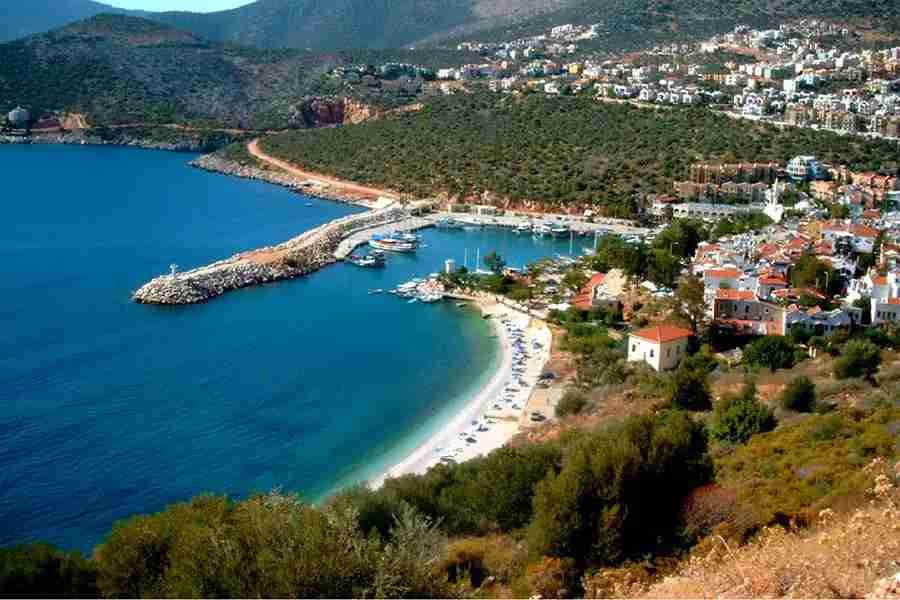Seek out and explore the most famous places tourists visit in Turkey like the natural wonders that is Pamukkale and Cappadocia. Culture lovers and history enthusiasts simply cannot pass this guide by.
Turkey is known to have a rich history, going all the way from the turbulent Byzantine period to the well-traveled Ottoman Empire as well as the Roman ways. Because of that, there are some spectacular views of various historical sites found in Turkey.
In addition, Turkey has such a wide as well as a very varied landform. For those who are fascinated by some outdoor activity, surely, there is no shortage of natural resources such as beautiful beaches, more than 45 national parks, dry deserts, and rugged mountains in Turkey. This place is replete with historical and architectural sites.
Renowned sites in Turkey
Let us start with Turkey's most recognizable and well-known landmarks. There is a purpose behind these postcard monuments being postcards! These are the most well-known landmarks in Turkey that are well worth a visit, both for their impressive architecture and their fascinating history.
1. Hagia Sophia, Istanbul
Hagia Sophia is one of the most impressive and important mosques in the world. Emperor Justinian built it in 537 AD, in the Roman period. It was built to act as the Cathedral of Constantinople. When it was built, it was the largest church in the Eastern Roman Empire and one of the largest for over a thousand years.
After the Ottoman Empire occupied Constantinople, Hagia Sophia was also converted into a mosque. No faces are allowed to be seen in mosques so you can find areas where heads of Jesus Christ have been painted out.
Hagia Sophia is one of the major places of historical significance located in Istanbul and is one of the first museums established in Turkey in the year 1935 but was ceased to be a museum and was once again made a mosque in the year 2000.
2. The Blue Mosque
One of the most beautiful places in Istanbul is the Blue Mosque because it features more than 200 stained glass windows and a magnificent marble mihrab with exquisite carvings. You can also discover Sultan Ahmed I's tomb there, as well as his place of rest.
Sultan Ahmed Mosque has numerous local names, however, even a casual observation attests that the Blue Mosque is the historians' architectural epitome in Istanbul. The period of their construction, here designates the years 1609-1616, as when Sultan Ahmed I was in power. The interior is characterized by hundreds of blue tile decorations, which contribute to its fame.
The Blue Mosque gets its name from the hue of the mosque, which is bathed in blue light at night, although many people think it was named for the blue tiles. It is important to note that this famous monument in Turkey is located across from the famous Hagia Sophia
It is one of Turkey's most well-known sights and has been recognized as a UNESCO World Heritage Site since 1985. Renovations are now being done on the mosque.
3. Istanbul's Grand Bazaar
The Grand Bazaar is one of the world's oldest and biggest marketplaces, featuring over 4,000 stores spread across 61 covered streets, making it one of the world's oldest malls as well. It is understandable why it was regarded as one of Istanbul's most popular tourist destinations in 2014.
The Grand Bazaar's lively shopping avenues are a hive of souk marketplaces and vendors where you may purchase anything from Turkish delicacies to lamps, carpets, and mats to clothing, towels, and other mementos to bring back from your vacation. It started functioning in 1455, not long after Constantinople was taken over by the Ottomans.
The Istanbul Spice Market is located just around the corner from Grand Bazaar and is a fantastic place to stock up on a variety of teas and spices that are meant to treat certain medical issues. These include teas that improve mood, regulate diabetes, and even enhance sexual function!
4. The Monastery of Sumela
In the Pontic Mountains, near Karadağ, sits the Greek Orthodox monastery known as Sumela Monastery. Dedicated to the Virgin Mary, the church was built in 386 AD, during Emperor Theodosius I's rule.
It is reported that the Apostle Luke painted a picture of the Virgin Mary inside the monastery.
The Sumela Monastery's location is what gives it such unusual and distinctive qualities. Situated approximately 1,200 meters (3,900 feet) above sea level on a mountainside, this architectural marvel is among Turkey's most remarkable creations.
The monastery looks out upon the Altındere valley, a prominent location in the Altındere National Park that was formerly the epicenter of Christianity.
However, because of its location, it has experienced various levels of destruction over time as a result of weathering and falling boulders. Over the years, the monastery has undergone multiple stages of repair and refurbishment; the most recent round of improvements was finished in 2017.
5. Ephesus
A visit to Ephesus, a UNESCO World Heritage Site and one of Turkey's most well-known attractions, would complete any vacation to the country.
According to the Ancient Greeks, the ruins date back to the tenth century BC. The city is 6.6 square kilometers in size and is located on the coast of Ionia.
Despite being in ruins now, the Greek city is nevertheless a popular tourist destination because of its excellent examples of Greco-Roman architecture. The Temple of Artemis, one of the Seven Wonders of the Ancient World, is the most noteworthy location at this historic landmark.
In addition, it is well-known for the Hadrian Temple, the Library of Celsus, and, of course, the Roman Amphitheater, which can hold 24,000 people.
Being the possible location of the writing of the Gospel of John, it is also a revered site in Turkey.
6. Galata Tower
Considering that it is visible from almost everywhere in the city, the Galata Tower is among Istanbul's most well-known landmarks. Under the rule of the Roman Empire, the watchtower was constructed in 1348 as a component of the Walls of Galata.
The tower's upper part was altered following the Ottoman Empire's conquest of Constantinople, but the majority of the structure remains true to its original design. Apart from the roof, that is all.
The tower was used to detect fires in the city during the Ottoman Empire. However, in 1794, the tower caught fire, destroying most of the lead and wood roof.
It caught fire once more in 1831, requiring additional restoration work. The roof was repaired after being damaged by a storm in 1875.
The roof was remodeled in the 1960s with concrete shingles rather than wood, and it was also made available for purchase so that visitors may ascend to the summit and take in expansive views over Istanbul.
The tower in Istanbul was recognized as a UNESCO World Heritage Site in 2013. One of Istanbul, Turkey's most well-known landmarks, the tower is now a museum and exhibition space.
Turkey's Natural Landmarks
With some of the world's richest biodiversity, Turkey offers a plethora of natural attractions for those who enjoy the great outdoors. These are Turkey's top natural landmarks, ranging from its expansive Mediterranean coastline to its enormous deserts.
7. Cappadocia's Fairy Chimneys
The fairy chimneys are rock formations that are thought to have originated in the Bronze Age and are most frequently found in the Cappadocia region of Central Anatolia.
According to legend, Christians who were persecuted around 1500 years ago fled the capital city of Constantinople to the Cappadocia region, where they discovered that the fairy chimneys' soft volcanic rock was easily shaped and porous. The fairy chimneys were converted into homes by them. In the vicinity, they also established numerous churches, monasteries, and cave shelters.
However, the Roman Christians did not build the fairy chimneys. They were created by basalt covering the solidified volcanic ash following eruptions.
The chimneys corroded over millennia, creating these 310-foot-tall pillars. Their unique, somewhat phallic structure is due to the formation of a mushroom-shaped cap at the top as the hard basalt erodes more slowly. This phenomenon is visible in Cappadocia's Love Valley.
Turkey Regarding Landmarks
As you can see, Turkey has many unique and beautiful landmarks. These Turkish sites are undoubtedly worth a visit, regardless of whether you are planning an amazing Turkey journey or just a few days in Istanbul.














